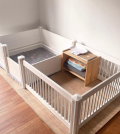The Ultimate Guide to Dressing a Newborn
Before the baby is born, you may have spent a lot of time—and money—planning her wardrobe. But in reality, she doesn’t require a wide range of clothing during her first few weeks.
You probably won’t have time to stress about tops, bottoms, socks, and hats that perfectly match because you’ll be too busy getting to know each other and just getting through the day (and night). Don’t worry; when the baby is a little older, there will be plenty of time for that.
But for now, the most important thing is to keep her secure and at ease. To help you do that, we’ve compiled this expert guide full of tips on dressing your newborn as you leave the hospital and in those first few weeks at home.
Dressing the Baby During the Day
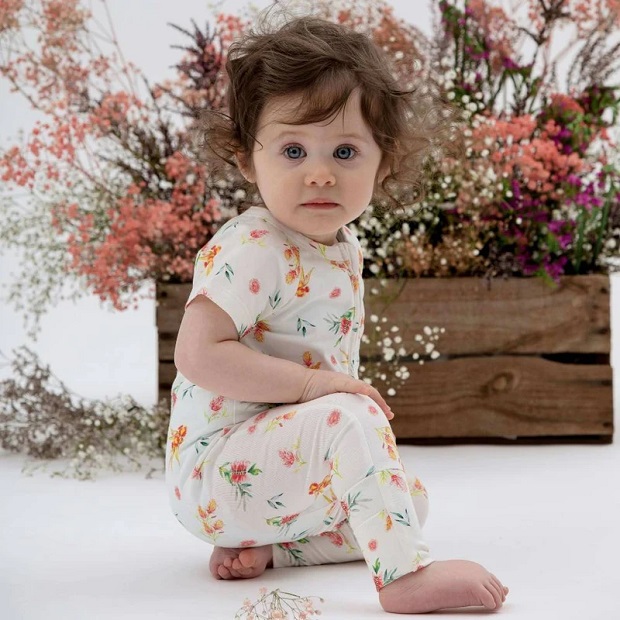
When they start searching for newborn clothes online, many parents get confused by the different names of baby clothes, not knowing which one is which. And the manufacturers’ labelling doesn’t make it any easier: it seems that onesies, bodysuits, jumpsuits and rompers can all mean the same thing.
To simplify the newborn dressing process for you, we won’t get into the right or wrong names debate in this article. Instead, we’ll stick to onesies for overalls and bodysuits for the legless version with snaps at the bottom.
Start with Bodysuits
Known also as jumpsuits, practical bodysuits for newborn are one-piece babywear that offers everything a wiggly newborn needs. These clothing pieces stay in place, keeping your baby’s back and tummy warm without the risk of being exposed at any time. If you ask yourself: how many bodysuits does a newborn need; the answer is that eleven should be fine.
Most bodysuits for newborn models have snaps at the bottom of the crotch for easy diaper changes. Additionally, some designs feature expandable necklines that allow easy put-on and off over your child’s head. You can pull these down your baby’s shoulders (as opposed to their heads) during a massive diaper blowout to keep the mess away from their face. You’re welcome!
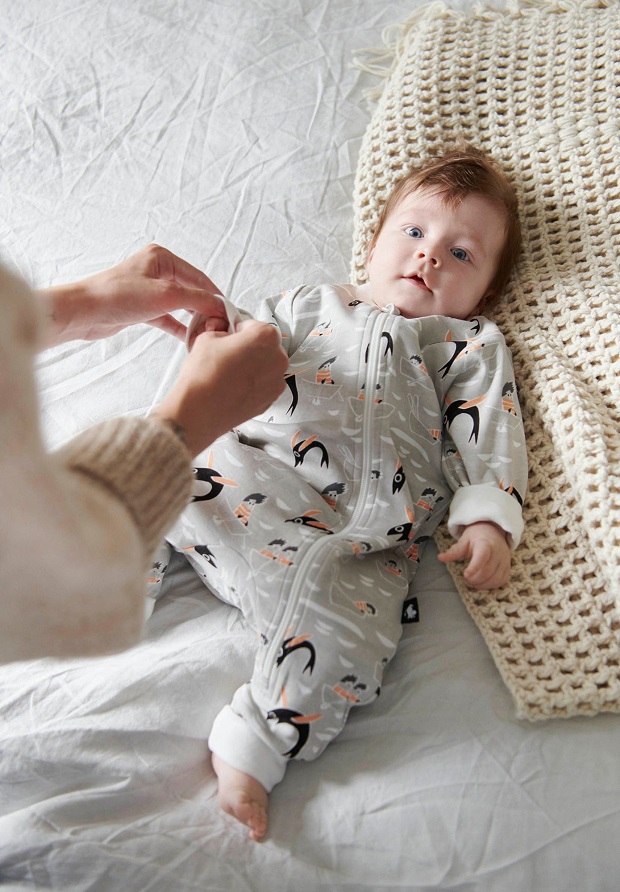
A wrap-style or kimono shirt with long sleeves is another option. These are especially useful during the newborn period. These models have snaps or zip across the front to eliminate the need to pull it over your infant’s head, which many babies find uncomfortable, and make it easier on the delicate umbilical cord stump, which needs to dry before it falls off.
Add Pants or Leggings
Although they are not necessary for infants, pants can be handy to cover your baby’s legs with a pair of pants whenever it gets chilly to keep them warm. Some don’t require baby socks or booties because they have built-in feet. Because even the tiniest infants can successfully remove their socks, such models, called footies, can be very practical.
Purchase regular baby pants or leggings without feet if you love dressing your baby in socks. Three to five pairs of pants and five to seven pairs of socks should be sufficient.
Add Layers
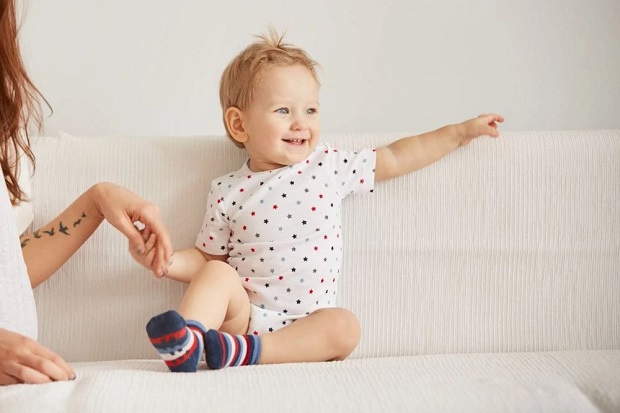
The number and thickness of layers the baby should wear will depend on the season. According to most paediatricians, all you need in the summer is a light onesie. Given that a newborn’s immune system is so immature, they usually advise long sleeves for babies because they keep the infant warm and protect her from accidental scrapes and the environment in general.
In winter, most babies can stay warm in whatever an adult wears, plus an additional layer. For example, if most people inside are comfortable in a tee, put a t-shirt over your baby’s onesie. Add a cosy jumper over the onesie and t-shirt if people are comfortable wearing sweaters. It is simple to remove layers as needed with cardigans that have buttons or zippers rather than those with crew or V-necks.
Be aware that many parents tend to overdress babies during the winter, so be careful not to go overboard. The baby may show signs of overheating, such as flushed cheeks, fussiness, or a sweaty back.
Dressing the Baby for Sleep
Less is always more when a baby is sleeping. Because infants can wriggle out of their mittens and hats in bed, this could increase the risk of SIDS. If she likes her swaddle, all she needs to wear is a onesie underneath it. Try a sleep sack or a padded onesie if your baby doesn’t like the swaddle.
Onesies as the Ultimate Sleepwear
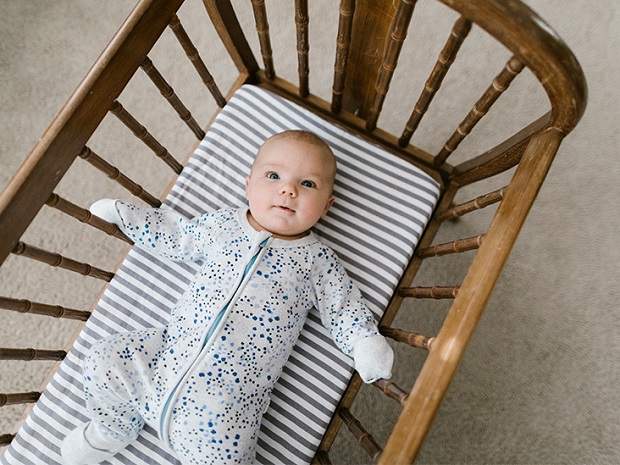
Onesies are essentially the definition of baby clothes, specially designed to meet the needs of a tiny person who isn’t used to wearing clothes. They’re the perfect base babywear layers, with the main advantage of staying put while protecting your baby’s back and stomach from exposure.
Similarly to pants, baby onesies come with or without feet. Since tiny baby feet grow so fast, choose bodysuits for newborn without feet to make the most of this staple newborn clothing piece. Long sleeves and legs are most parents’ preferred option, while sleeveless may be perfect for warmer environments and the summer months.
Onesies are the best baby pyjamas, but they’re not just for sleeping; they’re also great for wearing during the day. For instance, a simple onesie may be all your baby needs in summer. Long sleeves keep your baby’s arms warm while protecting them from unintentional scratches. You’ll need at least four onesies in the beginning.
The Importance of Choosing Natural Fabrics
Don’t stress about buying only organic clothing; natural fibres like cotton or bamboo are much more breathable and help regulate a baby’s body temperature.
Save brightly coloured outfits with character designs for older babies since you’re probably unsure when the baby will have sensitive skin.



